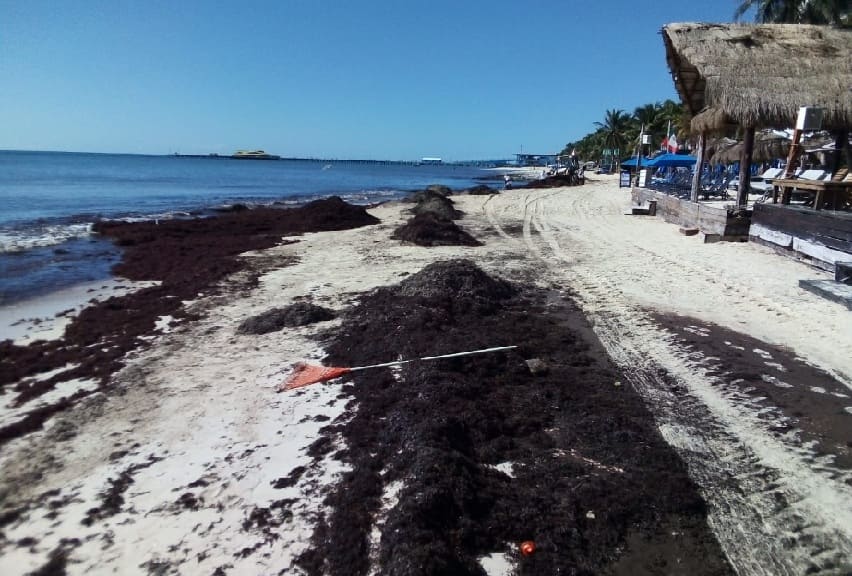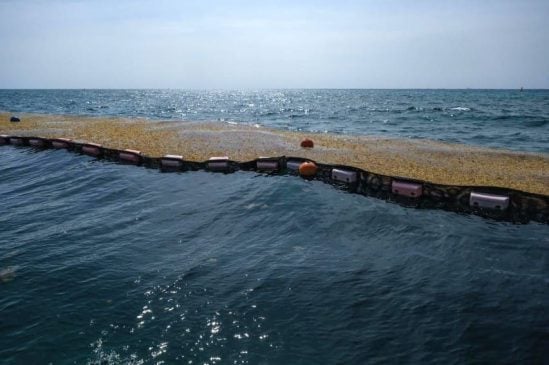Riviera Maya, Q.R. — Governor Mara Lezama says the state’s sargassum season is coming to an end. To date, approximately 120,000 tons of seaweed has been collected from Quintana Roo beaches. While there has been a noticeable decrease in the arrival of sargassum along the coast, Marina personnel continue in their collection efforts.

The Secretariat of the Navy reported that during the week of October 11-17, 188.4 tons of sargassum was collected on the beach of Mahahual. This work was carried out by 74 Marina personnel and 80 civilians, including business owners, restaurateurs, and service providers from the Port of Mahahual, along with specialized machinery and various resources.
To help collect sargassum, the Marina continues to use specially made vessels to capture and redirect the sargassum at sea.
“We have an ocean-going vessel with a 250-ton capacity, 11 sargassum harvesting vessels with a capacity of 20 tons each, 22 smaller vessels, 9,500 linear meters of sargassum barriers installed, and an additional 7,500 meters planned for 2026.
“We have collected more than 180,000 tons of sargassum so far this administration and removed more than 87,000 tons between January and October 2025,” the secretary explained.
According to Esteban Amaro, Director of the Quintana Roo Sargassum Monitoring Center, the number of sargassum landings has decreased significantly in recent weeks.

“For almost two weeks now we have noticed a significant decrease in the amount of sargassum arriving in the Mexican Caribbean. It is a very noticeable decrease.
“We have been monitoring it on the satellite and the last patches of the season, the last large clumps of sargassum, were off the coast of Mahahual, Xcalak, more or less at the height of Banco Chinchorro.”

The 2025 season has been historic in terms of volume. According to Amaro, approximately 120,000 tons has been collected to date.
“As of the last number I have, we were above the 100,000 tons collected at the end of August with an additional estimated 20,000 tons collected in September,” he said.
Due to the significant decrease, this year’s sargassum season could be over by the end of October rather than in November as predicted.
Quintana Roo is the first state in Latin America with a Sargassum Satellite Monitoring Center, a key tool in the fight against this phenomenon.

Esteban Amaro says the system allows them to monitor sargassum in the sea, considering sea temperature, current simulations, prevailing winds and all oceanographic and atmospheric components to predict the path of the macroalgae.
“The currents are changing. They’ve been moving north but above all, there’s very little sargassum in the sea now. It’s dropped significantly in the last two weeks which suggests the season is almost over,” he said.
“The winds are blowing very little. Autumn has caused the southeasterly winds to decrease significantly, and that’s helping to keep the sargassum from washing up,” he explained.

Based on satellite image analysis, the director estimated that the presence of sargassum could persist only during the first half of October, disappearing by the end of the month.

The state’s Sargassum Center relies on the services of the European Space Agency’s Sentinel 2 satellite, which is the only satellite capable of observing sargassum.



